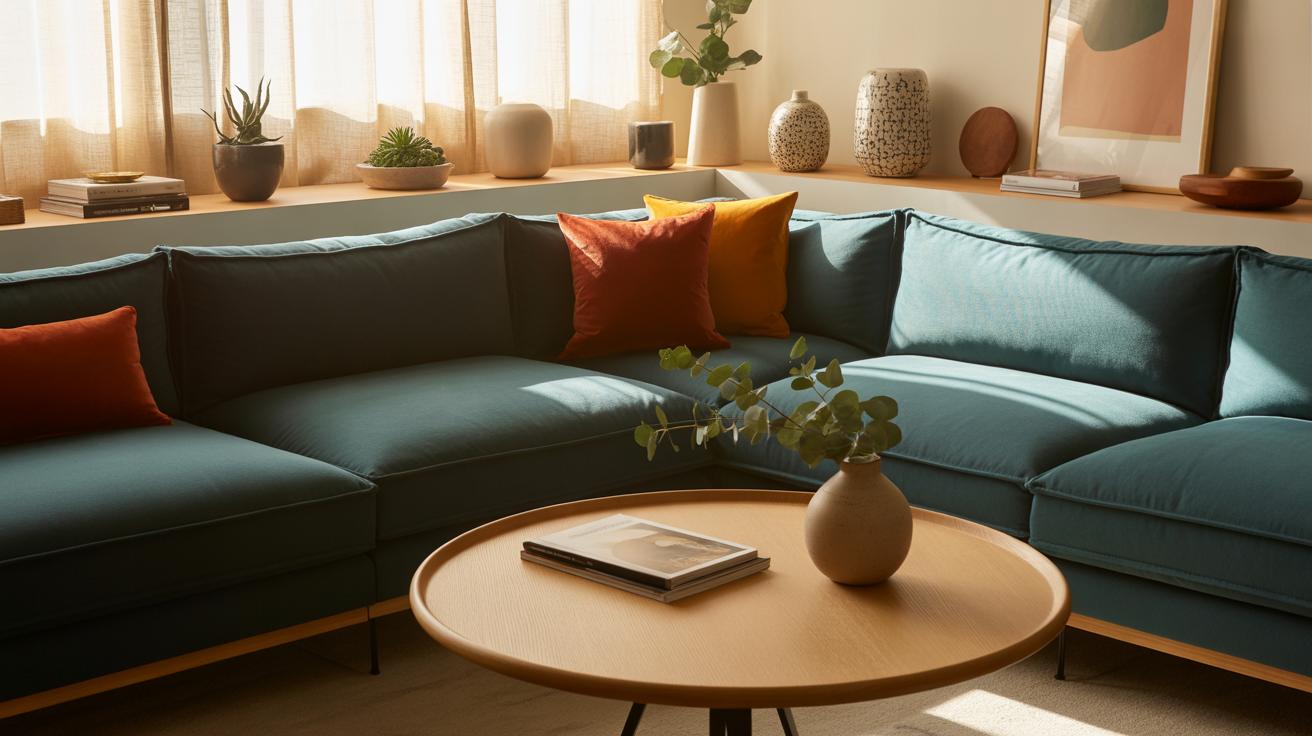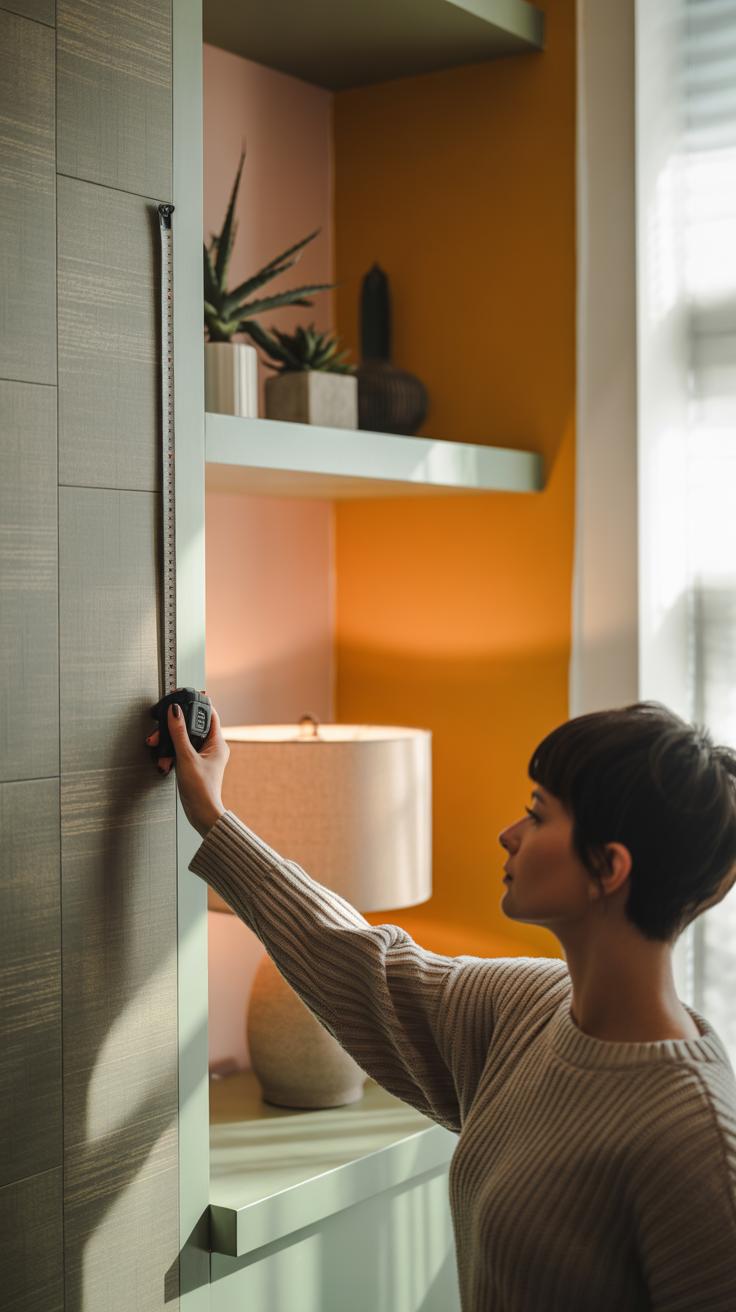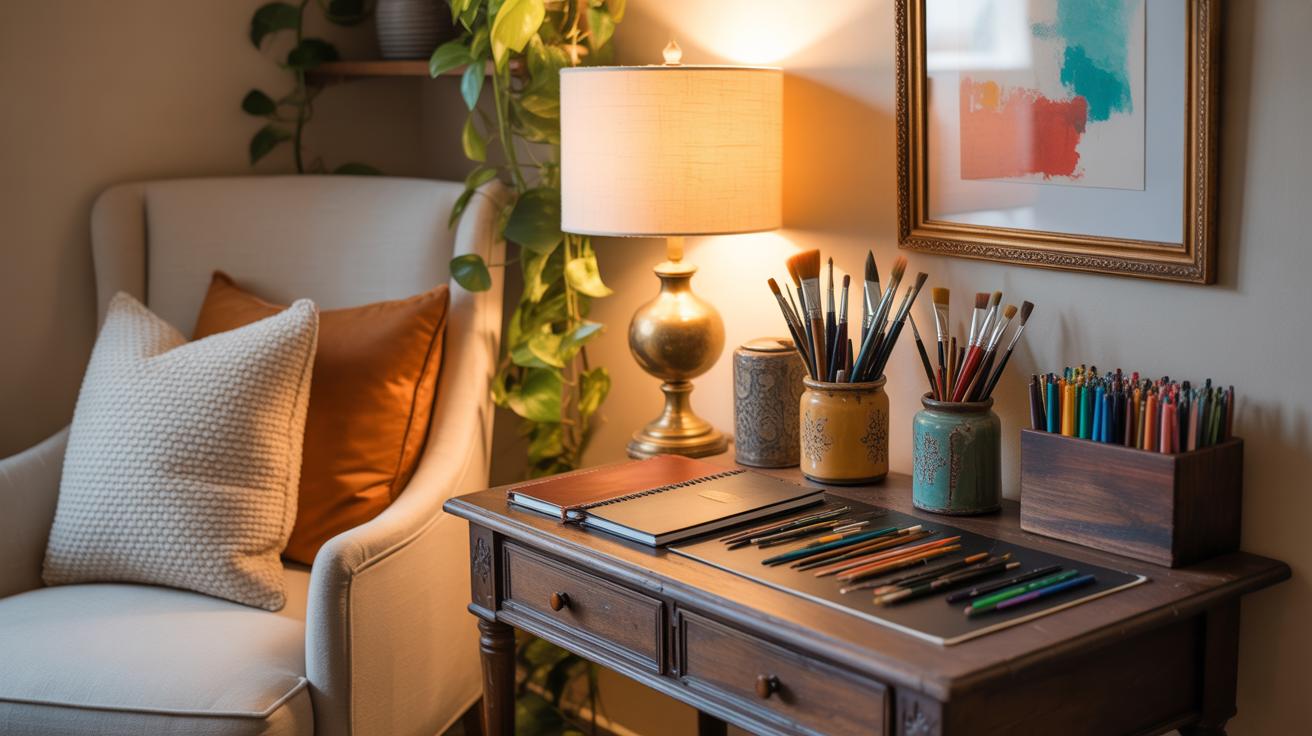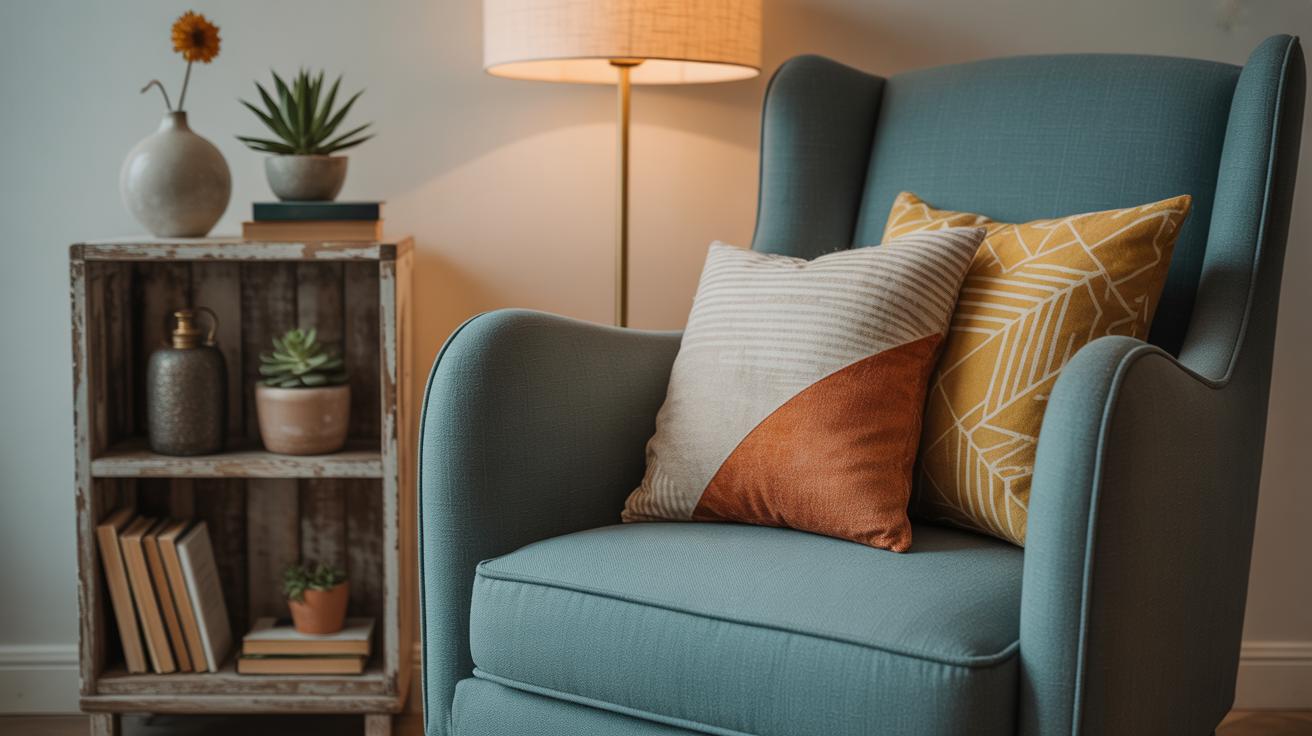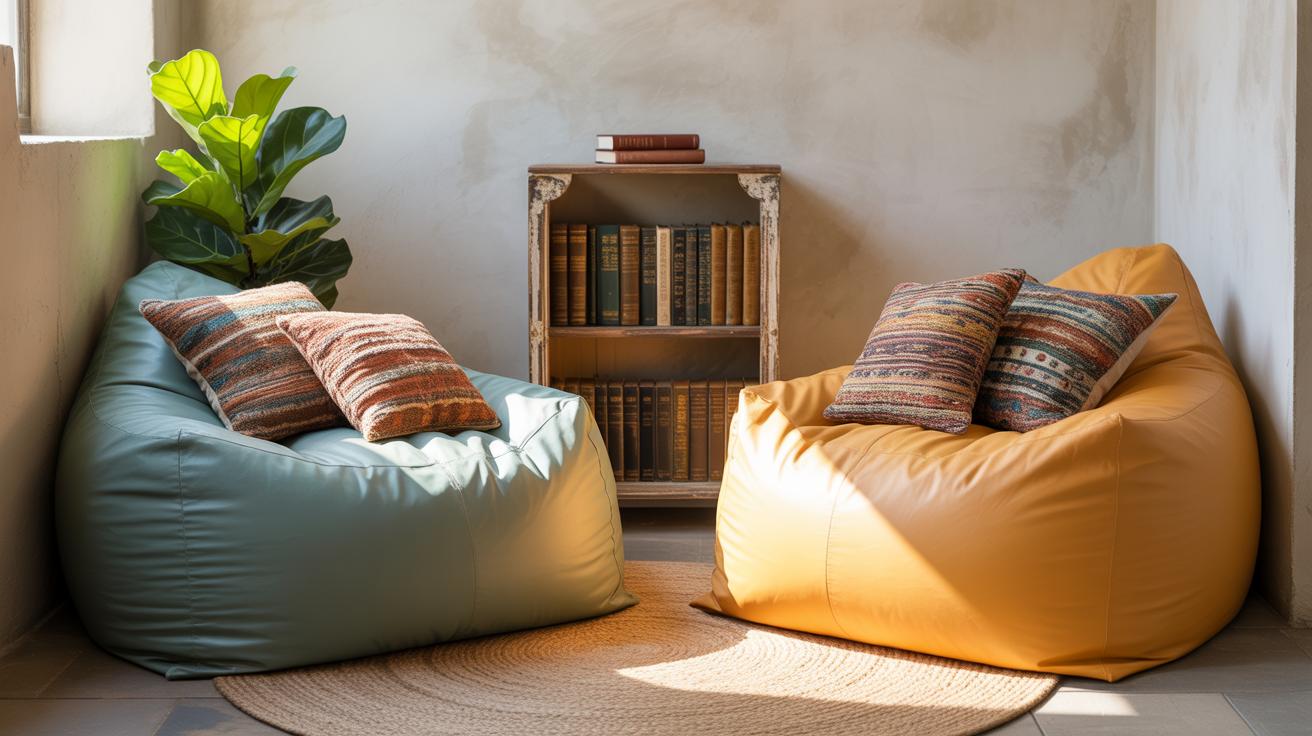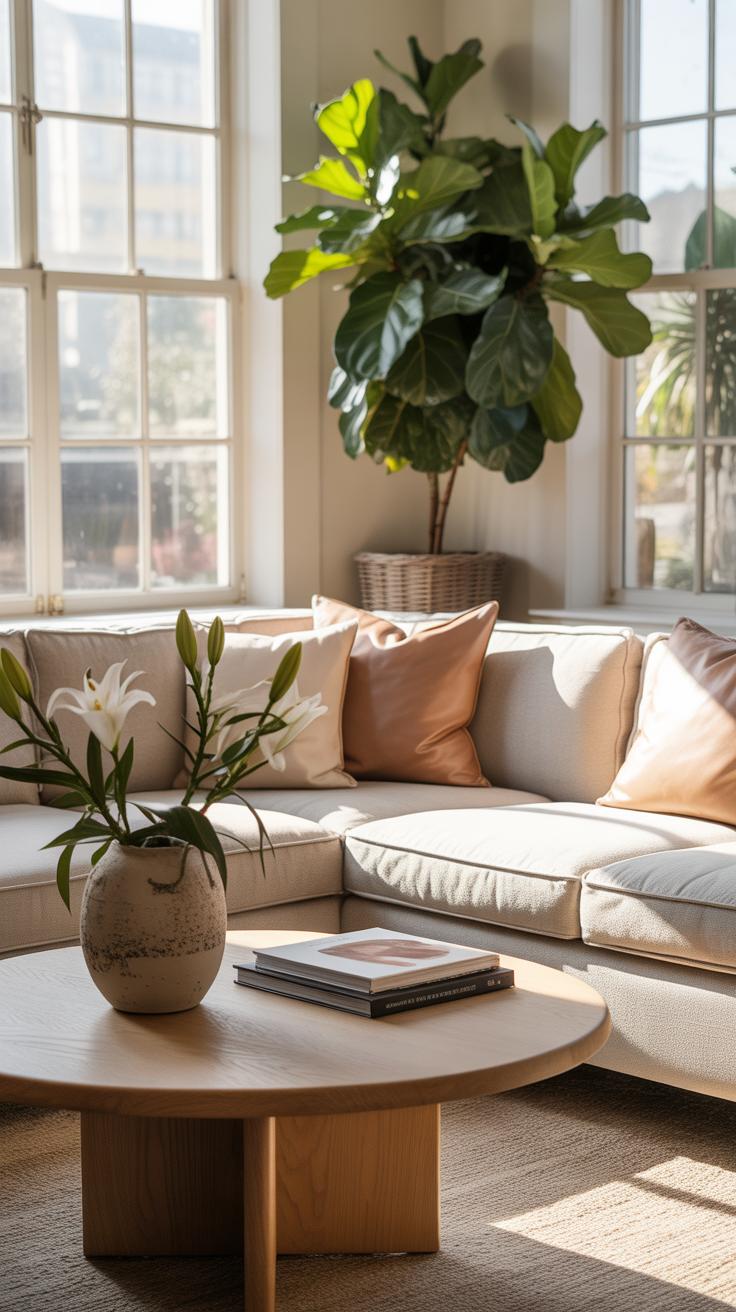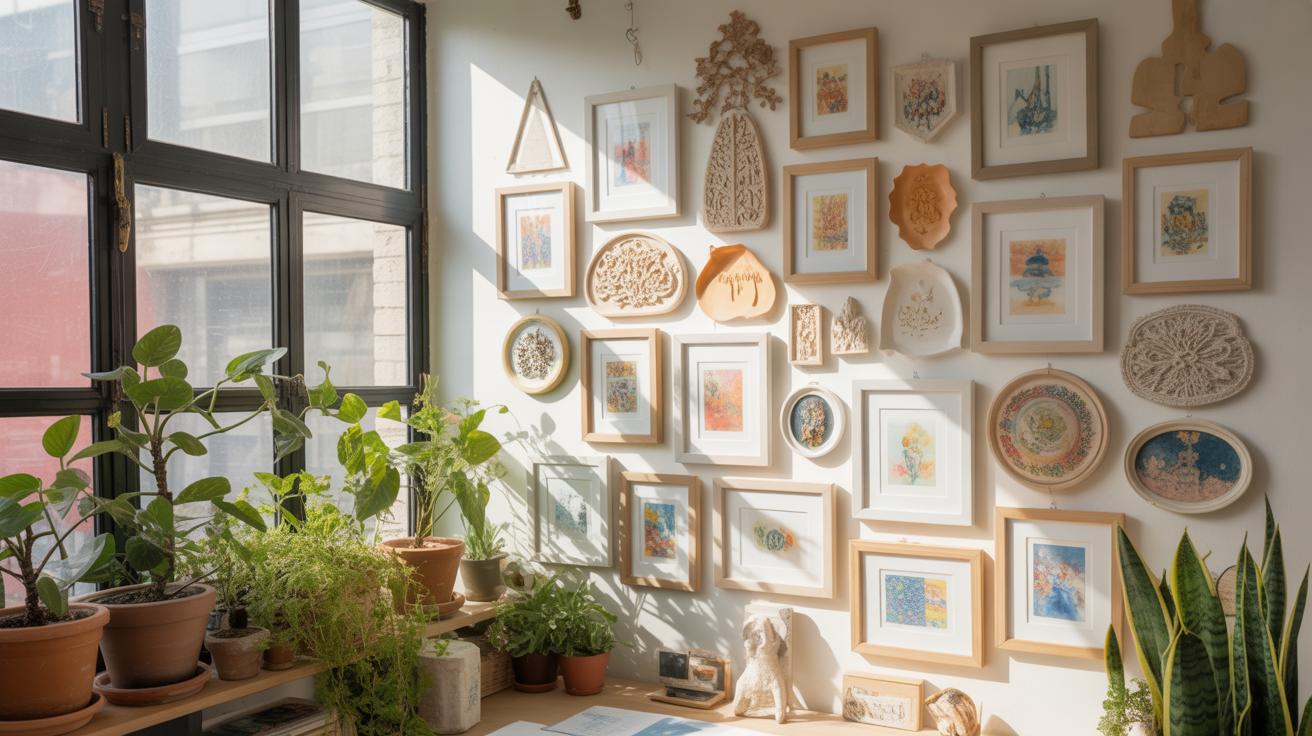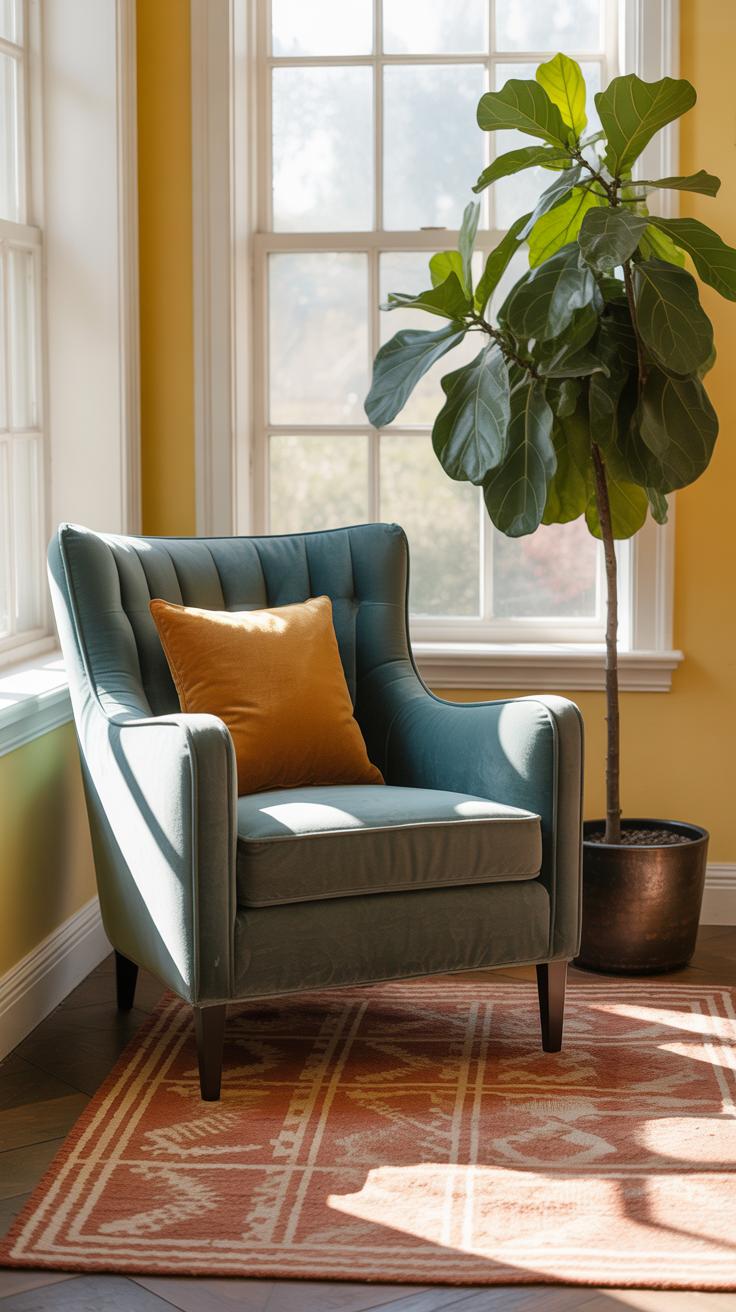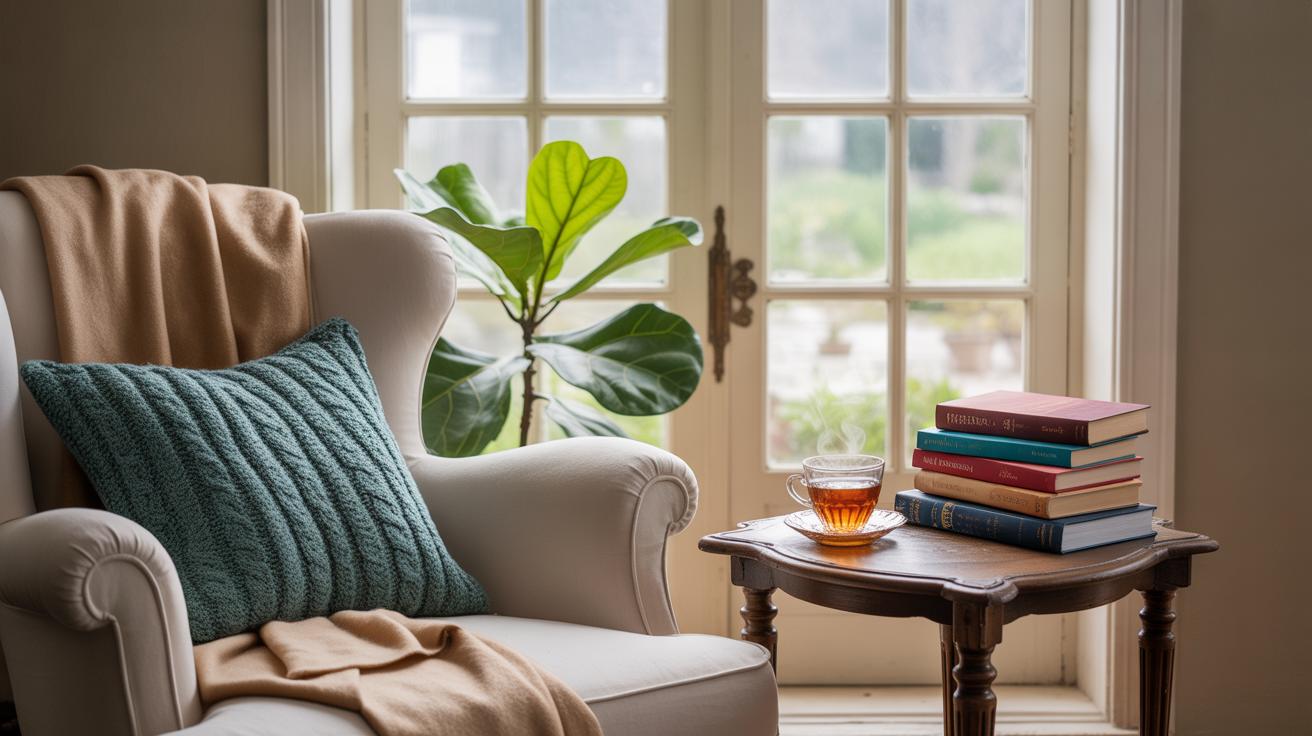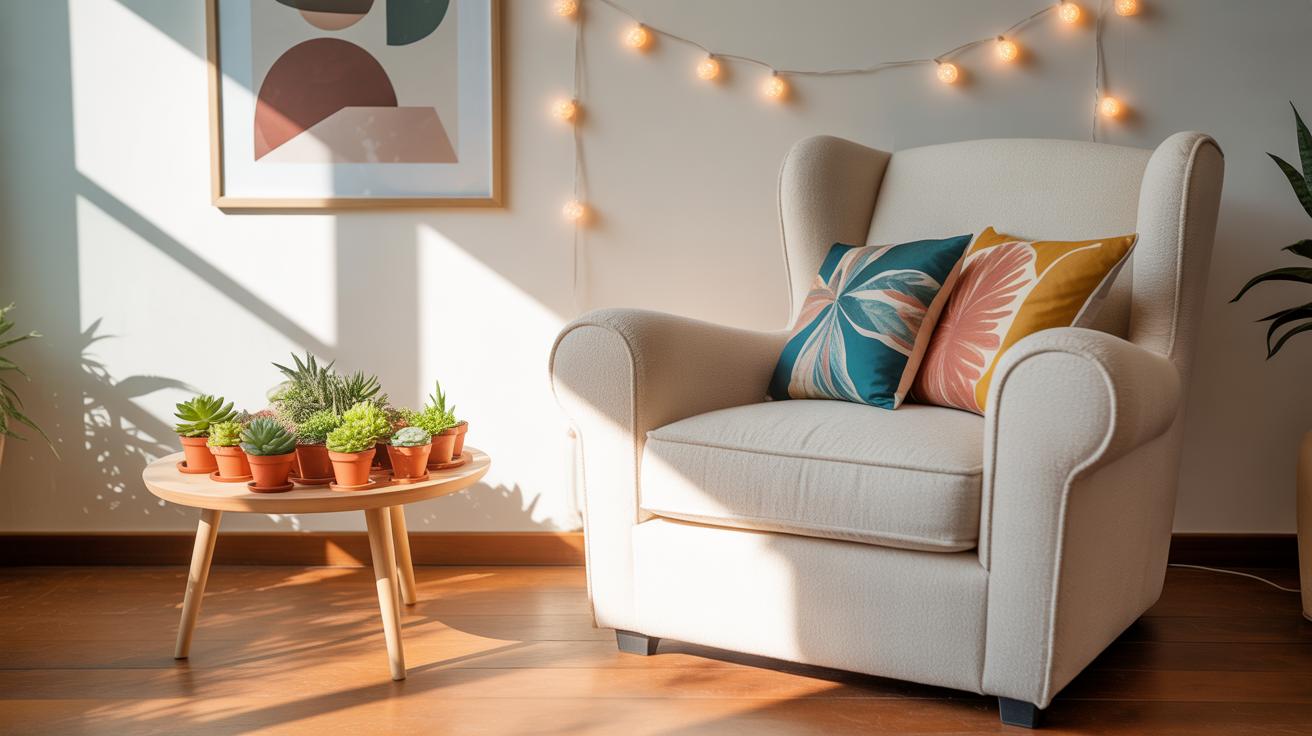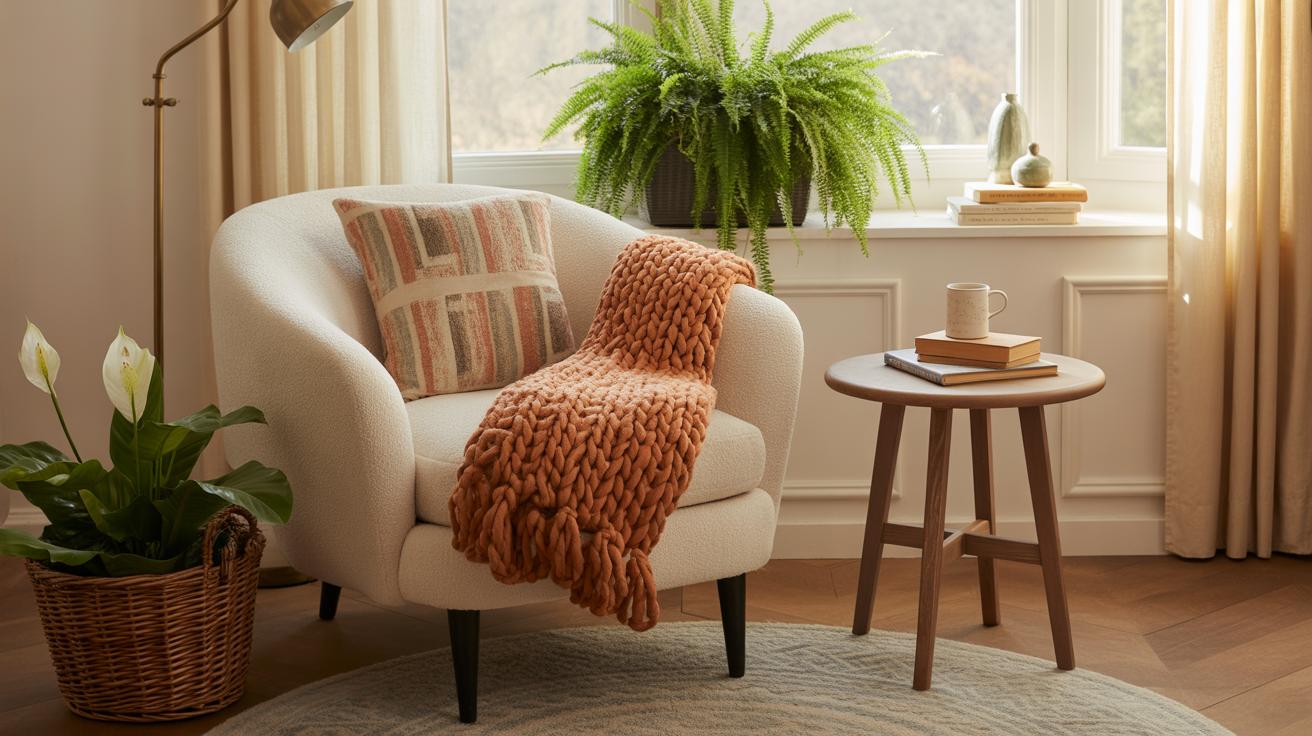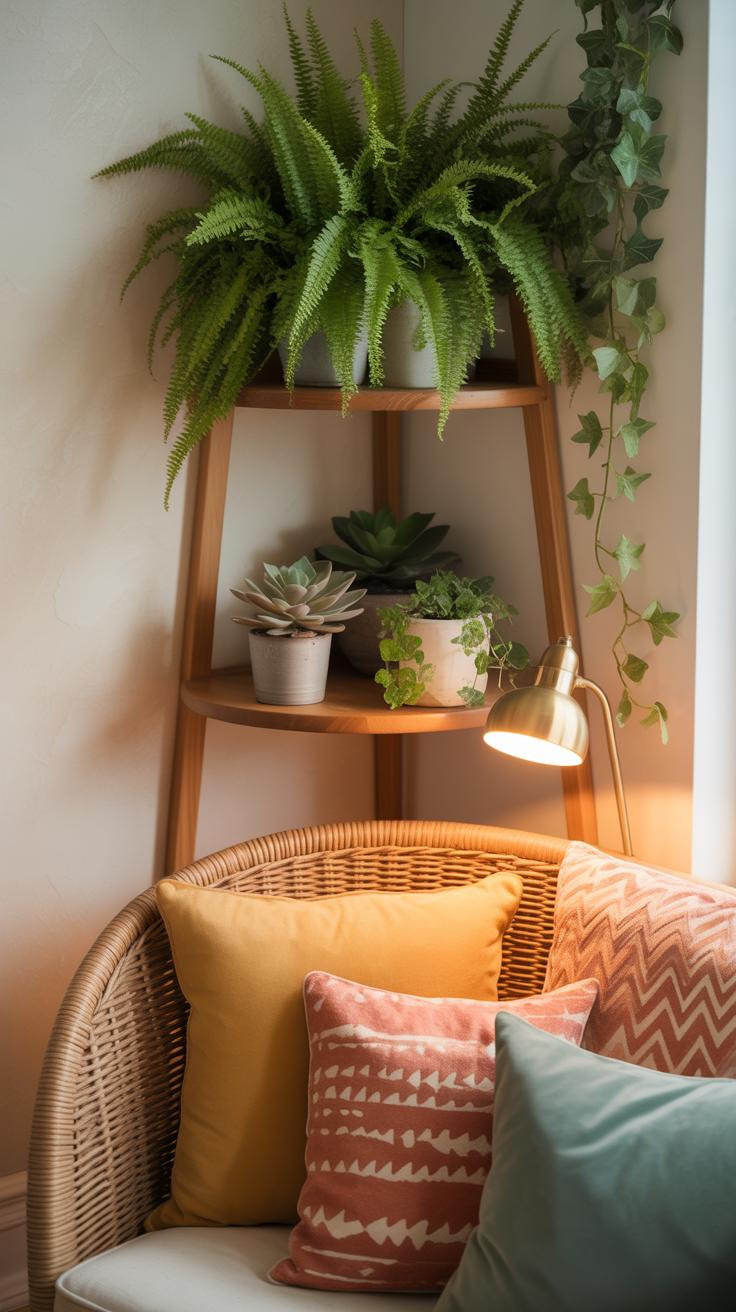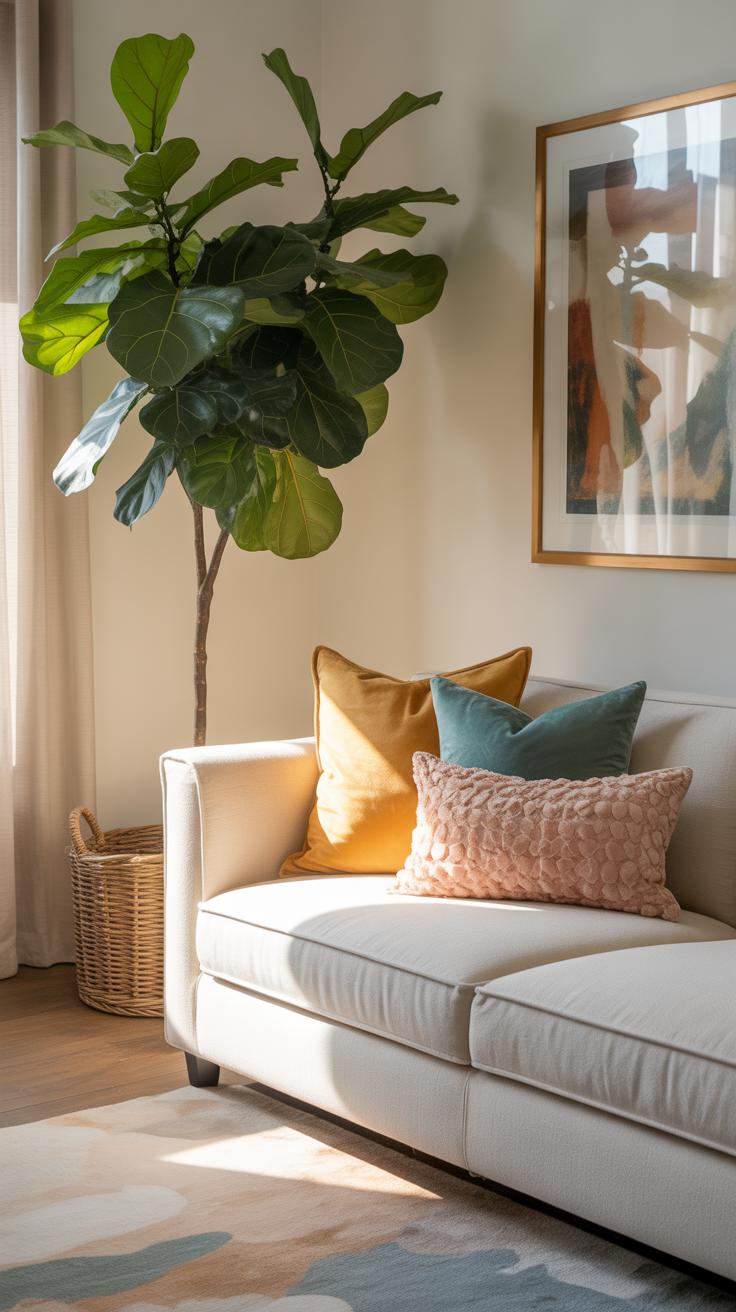Introduction
Your living room corners often go unused or get cluttered. You can change that by adding stylish corner furniture that fits your space. This not only makes your room look better but also creates more space for your needs.
This article covers different ideas for living room corners. You will learn about the types of furniture to use, how to arrange your corners, and what to avoid. Each section helps you make the best use of your space.
Assessing Your Room Corners for Use
Before grabbing any furniture, take some time to really examine your living room corners. These spaces can be surprisingly tricky. Sometimes one corner might be oddly shaped because of a window or a heater, while another could have an outlet that limits furniture choices. It’s not just about measuring the space but also understanding how accessible it feels. Can you easily reach it? Is there enough light? Does it interrupt natural foot traffic or block other furniture? These questions help you decide if the corner is usable or better left open.
Look for signs like wall angles—are the walls exactly 90 degrees or something close? Corners with a slightly wider opening might suit a chair better than a narrow shelf. Don’t assume all corners will work the same. I once tried to fit a corner cabinet in a space that seemed perfect until I realized the baseboards created a small gap that made the furniture wobble. Pay attention to details like that.
Measuring Your Corners Correctly
Getting your measurements right can save a lot of frustration later. You’ll want to measure the width, depth, and height of the corner space you plan to use. Start by measuring the length of each wall from the corner outward—this tells you the width available along both sides. Then, measure how deep the corner goes, especially if it’s an L-shaped recess or has alcoves. Don’t forget vertical space: sometimes a low sill or an outlet halfway up the wall means you can only use shorter furniture.
Use a tape measure for the most straightforward results. If your walls aren’t perfectly straight, a laser measure can help, but it’s not essential. Double-check each measurement; a tiny mistake can make all the difference. I often write down each number as I measure and re-measure after a few minutes just to be sure.
Identifying Corner Functions You Need
Once you know your corner’s size and shape, think about what you want it to do. Do you need extra storage to stash blankets or books? Maybe the corner could be a cozy reading nook if you add a chair and a lamp. Sometimes corners can be great spots to display plants or artwork, turning them into a decorative focal point. Or you might want your corner to handle a bit of everything—seating plus storage, for example.
Ask yourself how you use the room. If your living room tends to overflow with clutter, storage might be more important than extra seating. On the other hand, if you often entertain guests, having an extra seat tucked into a corner could be a lifesaver. It’s okay if the function you want isn’t perfectly clear yet—sometimes the furniture you find will shape what the corner ends up being. Just try to have an idea of what would make you reach for that space more often.
Selecting Corner Furniture Types
When it comes to corner furniture, choices vary quite a bit. Take corner sofas, for example. They’re great for creating a cozy gathering spot and fill up the corner nicely. Yet, they can feel bulky—sometimes making your space look cramped rather than open. On the other hand, corner shelves offer a lighter alternative. They keep clutter off the floor but might not add much comfort or seating.
Corner tables, especially those with a triangular or curved design, fit snugly and make ideal spots for lamps or decor. But their surface area is limited, so they’re not perfect if you want a larger table for drinks or books. Chairs designed for corners are rarer but can be stylish accents. Still, they may not always provide enough room to relax fully—sometimes just more decorative than useful.
Best Furniture for Small Corners
For tight spaces, you want pieces that won’t overwhelm. Floating shelves work well—they use vertical space without taking up a footprint. Small nesting tables can be tucked away until needed. A compact corner cabinet or a slim-profile chair can add function without consuming much room. You might also consider a corner pouf or ottoman that doubles as seating and storage.
Does your corner feel too cramped? Try a minimalist corner desk, which fits neatly for working or reading without bulk. And remember, less is usually better here. You want to keep the area accessible, not a tight squeeze.
Large Corner Furniture Options
If your living room has a spacious corner, you have more flexibility. A large sectional corner sofa can anchor the room, providing plenty of seating and comfort. Pair it with a sizable floor lamp or a tall plant for added style. Big corner shelves or cabinets can hold books, art, or media gear and draw the eye up. Even a corner chaise lounge can turn the area into a relaxing retreat.
Still, bigger doesn’t always mean better. Oversized furniture can make the room feel unbalanced if not arranged thoughtfully. Sometimes breaking up the corner space with multiple smaller pieces creates a more inviting vibe. It depends on what you want from that corner—entertainment, relaxation, or display.
Arranging Your Corner Furniture Effectively
Positioning furniture in your living room corners can feel tricky, but it doesn’t have to be. One useful approach is to think about how people move through the space. For instance, placing an L-shaped sofa snugly into a corner can open up the center of the room, creating better flow. Yet, sometimes pushing too much into the corner makes that area feel cramped instead of spacious—so keep some breathing room around the edges.
Small corner shelves or compact chairs work well when you want to fill an awkward space without overwhelming it. Think about angles, too—a diagonal placement of a chair or table might just lift the whole vibe and prevent the room’s movement from feeling rigid.
Don’t be afraid to experiment. You might find that shifting a piece just a few inches transforms the way your space feels. Have you tried placing taller pieces against the wall to draw attention upward? It can help balance the smaller corner accessories below and avoid that “bottom-heavy” look.
Balancing Corner Furniture with Room Layout
Achieving harmony between corner furniture and the rest of the room involves more than just matching styles. Scale and proportion matter quite a bit here. If your corner piece is bulky, try pairing it with lighter, lower-profile furniture elsewhere so the room doesn’t feel lopsided.
Sometimes colors can help balance the space too—if your corner chair is a bold shade, keep other pieces more neutral to prevent visual clutter. Conversely, a neutral corner unit can anchor colorful accents opposite it. Pay attention to how natural light touches your corner; a dark spot can make even well-placed furniture feel heavy.
Think also about how your corner relates to main focal points like the TV or fireplace. You want your corner furniture to complement, not compete. Sometimes arranging seating to gently curve around a corner piece provides a more connected atmosphere without overcrowding.
Creating Cozy Nooks in Corners
Turning corners into inviting nooks makes your living room feel warmer, even if space is limited. A small, plush armchair paired with a floor lamp and a slim side table can signal “quiet retreat,” perfect for reading or relaxing. Don’t shy away from adding a soft throw or textured cushions to soften the space further.
Another idea might be a window corner: fit a cushioned bench or small loveseat there and add plants or books nearby. It turns a neglected spot into a natural hideaway. Sometimes, even a tiny desk or compact vanity works—creating a purposeful zone without taking over the room.
Rugs can define these nooks as well, visually separating them from the rest of the living area. Lighting matters too—a corner uplight or a small cluster of candles really changes the mood. What corner in your living room feels the most welcoming or could become a personal little sanctuary? Experimenting with a few touches may surprise you.
Using Color and Light in Corners
Choosing the right colors for your living room corners can change how spacious and welcoming they feel. Light, cool tones like pale blues, soft grays, or gentle greens often make corners appear larger. But on the flip side, darker shades can make a corner feel cozy and intimate, if that’s what you want. I found once that painting a small corner with a muted olive green gave it a warm depth, without closing it in. It’s curious how much paint can shift perception.
When it comes to decor colors, try layering hues—say, a neutral wall balanced with cushions or art in bolder tones. It adds interest without overwhelming the space. Have you noticed some corners can feel flat? Using contrasting colors on trim or molding helps to break the space up visually and keeps corners from disappearing.
Lighting plays a huge role in whether a corner feels inviting or neglected. Floor lamps with a soft glow, positioned just so, can turn a cold nook into a reading spot. Spotlights aimed down from above bring an architectural focus and highlight artwork or textured walls. I once experimented with a dimmable table lamp in a corner, and adjusting its brightness made the whole room’s mood shift.
Some practical tips to brighten corners include:
- Using adjustable lamps so you can change lighting based on time of day or activity.
- Installing wall sconces if floor space is tight—they free up room and add ambient light.
- Trying LED strips tucked behind furniture for a gentle glow that doesn’t dominate the room.
Have you thought about how shadows play in corners? When poorly lit, they feel cramped, but good lighting can erase that—and maybe even make you wonder if you’re seeing the space differently. Light and color interact more than we might expect, especially in corners that are easy to overlook.
Corner Storage Solutions
Living room corners often get overlooked, but they can really offer some good storage opportunities if you choose the right furniture. Think about corner shelves—they’re simple, yet can hold quite a bit of stuff, from books to decorative accents. You don’t have to stick to the usual triangle shape either. Curved or L-shaped shelves can create a softer look while making the corner feel more inviting.
Then there are corner cabinets, which I’ve found useful when you want to hide things out of sight. These pieces usually stand taller and can store anything from board games to media accessories. Multi-use units also deserve mention—like a corner bench with storage underneath or a cabinet topped with a small display shelf. These give you a bit of everything: seating, display, and concealed storage all in one spot.
It’s easy to forget how much these furniture pieces can add to your room without taking extra floor space. So, while decorating, ask yourself: which corner is underused? That’s probably where you can squeeze in a piece that works hard but isn’t loud about it.
Installing Corner Shelves Easily
Choosing the right corner shelves starts with understanding what you want to store or display. Think about the weight and size of items—wiggly glassware may require sturdier brackets than a few picture frames. Start by measuring the corner space carefully, factoring in height and depth to avoid overcrowding.
Once you’ve picked your shelves, installation is usually straightforward. Use a stud finder to locate wall studs—that’s where you want your screws for better support. Mark the brackets carefully, double-check the level to keep shelves straight, then drill pilot holes before fastening everything in. Taking your time here prevents crooked shelves, which can be surprisingly irritating.
Don’t hesitate to try adjustable or modular corner shelves if your storage needs tend to shift. That way, you can tweak the layout without a full redo. Sometimes, you might want a shelf for displaying plants and later switch it to hold books instead; flexibility matters.
Choosing Storage Cabinets for Corners
Corner cabinets can be a bit tricky because not all fit neatly into every corner. Before buying, check the cabinet’s depth and width against your room’s dimensions. You want it to fill the space without sticking out awkwardly or making the room feel cramped.
One key benefit of corner cabinets is their capacity to store larger or bulkier items in a way that’s accessible but hidden. Look for designs with rotating shelves or lazy susans inside—that way, you reduce the hassle of reaching in. Self, I found these quite handy, though they can sometimes add to the cabinet’s cost.
Style also matters. A cabinet that matches your existing décor or complements your other furniture will blend in better and won’t feel like an afterthought. And think about doors and handles—soft-close hinges are worth it if you dislike slamming sounds, but I get it if you don’t want to spend extra on features you might not notice all the time.
Seating Options for Corners
Corners in living rooms can feel tricky, but they offer a great chance to add practical seating without wasting space. Corner sofas often come to mind first, and for good reason. They wrap around a corner nicely, offering plenty of seats without sprawling into the room too much. You’ll find models ranging from compact loveseats with a chaise to large sectional sofas that can almost fill a corner entirely. Choosing the right size really depends on your room. A small nook might only fit a slim L-shaped sofa, while a bigger living room can handle a spacious U-shaped sectional.
Besides sofas, don’t forget about single armchairs or small benches. They can fill awkward corner gaps or stand alone as reading spots. A well-placed armchair can create a cozy nook while still leaving room to move around. Benches also work surprisingly well, especially if they have built-in storage. Imagine sliding one under a window or against the corner wall—it’s space-saving and functional.
Here are a few ideas that might help you think through your options:
- Think about flow. Do you want to keep the corner open or turn it into a gathering point?
- Armchairs can break up a heavy sofa layout and add flexibility—you can move them around as needed.
- Benches are subtle but useful for extra seats if you have guest overflow or kids playing around.
- If your corner is narrow, consider a deep seat bench instead of a bulky armchair.
I’ve found that sometimes a small, single chair or bench completes a corner better than a large sofa chunk—especially in mixed layouts. You might even want both, depending on how you use the space throughout the day. So, which type feels best for your living room corners? Sometimes, trying a few samples or sketches helps to see what really fits—and that little pause can save you from a big mistake later on.
Creating Functional Corners with Accessories
Using Rugs and Soft Furnishings
Rugs are surprisingly good at marking out a corner’s purpose. Placing a small rug in a corner can immediately create a cozy zone, whether it’s for reading or just a quiet nook. The texture or pattern of the rug helps soften what could otherwise feel like an awkward, empty space. I’ve noticed that layering rugs—like adding a sheepskin on top of a woven rug—makes the area more inviting. Cushions play a similar role; scattered cushions bring warmth and comfort, especially if you have a corner bench or a small chair. They also add color and depth without taking up floor space.
Think about mixing sizes and shapes with cushions too. Round throw pillows can contrast nicely with square ones, breaking the visual monotony. And the material matters — velvet feels different from cotton or linen, changing the mood subtly.
Decorating Corners with Plants and Art
Plants naturally draw the eye and help corners feel alive, which can be oddly comforting. Taller plants, like a fiddle leaf fig or a snake plant, work well in corners that need a vertical lift. Smaller pots or trailing plants on a shelf can fill lower spaces without clutter. I guess the choice depends on light and how much care you want to give. Sometimes, splashing a corner with unexpected greenery shifts the whole vibe of the room, making the corner feel more intentional.
Wall art also deserves careful thought. Large framed prints can command a corner effectively, but grouping smaller pieces in an asymmetrical setup can add interest without feeling too formal. Why not try a mix of mediums? A small wall sculpture placed alongside prints changes the texture on the wall itself. The wall space feels less neglected, and the corner gains personality.
What if your living room corners could tell stories just through these little touches? It’s funny how a few well-chosen cushions or a single plant can transform a space you rarely even notice otherwise.
Avoiding Corner Decoration Mistakes
Signs Your Corner is Too Crowded
It’s easy to push too many items into a corner, thinking every inch needs filling. But how do you know when it’s gone too far? A corner feels cramped if you find it hard to move around or if the furniture blocks natural light or sightlines.
Watch for overcrowded surfaces where decor and small furniture compete for attention. If your corner looks like a jumble of unrelated pieces, that’s usually a red flag. You might also notice that the space feels heavy or unbalanced compared to the rest of the room.
To fix this, try removing a few items or swapping big pieces for sleeker, scaled-down alternatives. Clearing visual clutter, like too many knick-knacks or mismatched textiles, helps restore flow and focus.
Matching Corner Style with Room Theme
Many people forget to connect the corner’s look with the broader room vibe. A modern corner chair can seem out of place in a rustic room; an ornate shelf might feel awkward in a minimalist setting. The style should echo, gently or boldly, what’s happening around it.
Think about colors, shapes, and materials in the room. Coordinating those elements in the corner furniture and decor makes everything feel intentional instead of random. Sometimes mixing styles works, but it takes more care to avoid visual chaos.
When in doubt, choose pieces that complement your main theme—even if the corner is a small space, it reflects the personality of the whole living room. I’ve often found a quick style check saves hours of frustration later on.
Comparing DIY vs Buying Corner Furniture
Pros and Cons of DIY Corner Furniture
Building your own corner furniture can feel rewarding. You get complete control over the design, size, and materials. If you want something unique that fits a tricky space, it’s tempting to try your hand at it. Plus, it might save money—at least on the surface. You can pick affordable lumber, paint it yourself, maybe repurpose some parts. But then again, it takes time. You might underestimate the effort, or your skill level. Sometimes a simple corner bench turns into a frustrating puzzle of cuts and measurements gone off. And let’s be honest, not everyone has the tools or patience to finish the project neatly.
On the other hand, DIY furniture can carry a sense of pride. It’s personal, tailored, and potentially a good way to build a piece exactly how you want it. But mistakes happen. Wood warps, screws don’t hold, and suddenly you’re back at square one or need to buy extra parts. It’s not just about cost, but effort and frustration levels too.
When to Buy Ready-Made Furniture
Purchasing ready-made corner pieces makes sense when you need something quickly or aren’t confident in woodworking. Stores offer a variety of designs that fit most corners, often with built-in storage or comfort features that are hard to match at home. If you’re tight on time, don’t want to deal with tools, or need perfect finishes, buying is generally smarter.
Also consider if your living room corners are standard sizes. Off-the-shelf furniture fits these better, meaning you avoid awkward gaps or unevenness. Not to mention, many ready-made options come with warranties. That kind of security is hard to beat if something breaks or wears out.
But if you crave something truly custom or enjoy hands-on projects, DIY might still be worth exploring. Sometimes it’s about the experience, not just the final product. What do you think suits you better?
Maintaining and Updating Living Room Corners
Cleaning and Caring for Corner Pieces
Your corner furniture gets a lot of use, yet cleaning it often gets overlooked. For wooden corners, a simple wipe with a damp cloth followed by drying is usually enough. Avoid harsh chemicals that might strip the finish, unless you want to accidentally dull the surface.
Fabric upholstery? Vacuum regularly to prevent dust buildup and spot-clean with mild detergent or upholstery cleaner when stains happen. Leather needs a bit more care—wipe spills immediately and use leather conditioner every few months. I once skipped this for months and ended up with dry, cracked areas that weren’t fun to fix.
Metal or glass corner tables often need little more than a quick dusting and polish now and then. Still, check joints and screws to keep things sturdy. It’s surprising how loose a corner shelf can get when ignored.
Refreshing Corners with Minimal Effort
Small changes can shift the whole vibe of your corner. Swapping out cushions or pillows is a quick way to refresh without spending much. You don’t always need to buy new ones; even flipping cushions around can brighten a space.
Try rotating accessories like vases or picture frames. Sometimes just changing their position or mixing in a new color can feel fresh. Or add a new throw blanket with a different texture or pattern—this often adds warmth or contrast without a big commitment.
Plants? Yes, plants bring life but remember they need light. Moving them closer to a window or swapping pots to something fresher can give your corner more personality.
Still, I wonder—could subtle changes make you notice your corner more? Or is it just me, thinking small tweaks might actually keep a room feeling less stale over time?
Conclusions
Living room corners hold a lot of potential when you use the right furniture and arranging tips. Stylish corner pieces like shelves, chairs, or tables can open up space and add function. Avoiding common errors like overcrowding or ignoring scale helps keep the corner neat.
Use these ideas to rethink your living room corners. Small changes make your home more inviting and practical. Start today by picking one corner to improve and see how it transforms your room.

